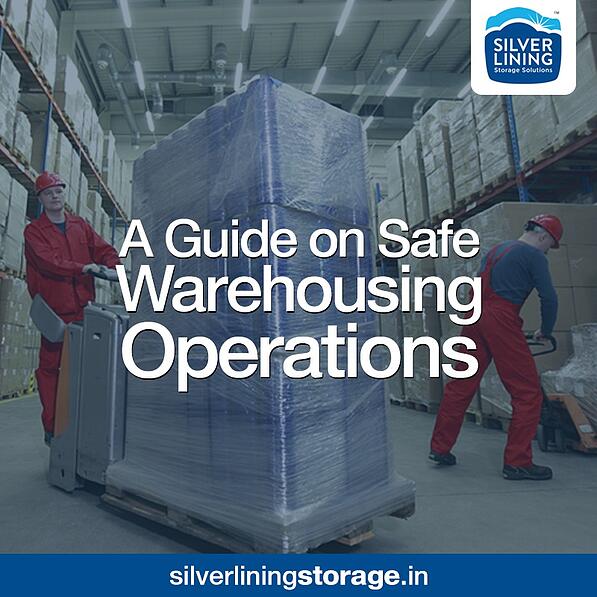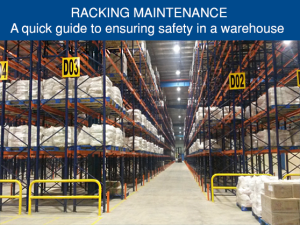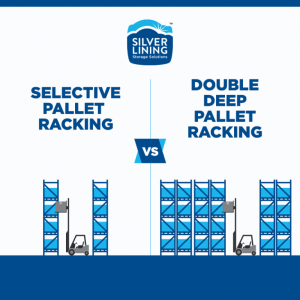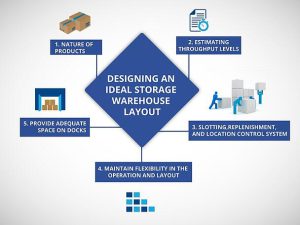Each racking system is designed and made for unique situations. Some are best suited to high product turnover and medium volume, while others are meant for low product turnover and high storage racking capacity. For instance, the double deep pallet racking system is ideal for optimal space utilization at warehouses that have high storage density requirements.
Warehouse managers are constantly on the lookout for better ways of organizing a warehouse to meet new demands – which may be:
- The addition of a new product line
- An increase in volume of existing SKUs
- To drive further improvements in warehouse efficiency.
Any or all of these will need a careful re-evaluation of your current warehouse storage and operations. As needs and imperatives change, you will need to adapt or add racking systems that suit the changing conditions.
So, how do you go about finding your ideal racking system? Each racking system is designed and made for unique situations. Some are best suited to high product turnover and medium volume, while others are meant for low product turnover and high storage racking capacity.
One system that’s enjoying a lot of popularity presently is the Double deep pallet racking system. Popularity however is not an important factor in selection of a warehouse storage system, there are more important things to consider. There are several variants of pallet rack storage systems on the market and you need to understand the contexts and reasons for Double deep systems’ popularity to decide, if it is for you.
To simplify this process, we will outline a set of evaluation criteria and see how the Double deep pallet racking system performs on each of them.
What to consider:
Before you choose a pallet rack system you need to consider things like:
- What products are you storing? Product characteristics
- How many different products/SKUs do you need to store?
- SKU volumes or No of SKUs in each product category?
- What should be the throughput rate?
- What is the target warehouse racking capacity?
To decide if a particular racking system will meet your needs and deliver a good ROI, you need to know its advantages, disadvantages and suitability to your particular needs.
Let’s learn what these are in case of a Double deep pallet racking system.
What is Double Deep Pallet Racking?
Double Deep pallet racking system is a variation on selective pallet racking and is best understood in comparison to it. In Selective pallet racking, two single rows of pallet racks are placed back-to-back. But in double deep racking four single rows of pallet racks are placed back-to-back. This limits immediate accessibility to only the two aisle facing pallet rows making the double deep pallet rack a first in, last out (FILO) pallet rack system.
Now let’s know about the advantages of this storage system:
Advantages
- An increase in pallet racking capacity by as much as 10-15% depending on warehouse racking layout and size. Up to 40% more storage capacity than selective pallet racking.
- Eliminates unneeded aisles and releases storage space, increasing floor space utilization by 55%.
- Offers 50% selectivity, i.e., immediate accessibility to 50% SKUs.
- Same low cost per pallet ashttps://silverliningstorage.in/selective-pallet-racking.html and less expensive than the two deep Push back racking system with same storage density.
- Easily relocated and easily converted to/from single deep system.
- Variety of frames profiles and adjustable beam levels to choose from for re-configuring the pallet size to fit changing requirements.
Installing a double deep pallet rack system, can eliminate the need for renting or building new storage space by increasing cubic space utilization (storage density) cost-effectively.
Moving on to the disadvantages,
Disadvantages
- Storage height in static storage system is limited to 10 mts for safe operations.
- Storage loss of 15-20% is encountered as only limited SKUs can be stored in front storage positions.
- Works on Last In First Out (LIFO) inventory principle limiting the kind of SKUs that can be retrieved immediately.
- Reduced access to SKUs, half of the inventory is placed behind another pallet when capacity utilization is full.
- Need special double deep reach trucks and specialized forklifts to access pallets
- Poor visibility of rear storage pallet especially at upper levels for order pickers and truck drivers.
- Speed of pallet access is reduced, resulting in lower throughput rates.
The most obvious disadvantage is that a double deep pallet system requires additional investment in special order picking equipment like new double deep reach trucks or extensions and counterbalances for existing forklifts. But, most of these additional costs are offset by the advantages a double deep pallet system confers.
Best Suited for:
- Companies that have a limited range of products in large or very large numbers, i.e., medium number of SKUs, distributed in medium or high volumes.
- Stock with medium to long shelf-life. Employs ‘Last In First Out’ (LIFO) principle which makes it unsuitable for storing items with short shelf-life.
Extensively Used In: Cold storage, Paper, F&B, Manufacturing, Distribution centres and dry store industries.
Now that you have the pros and cons laid out clearly, you need to do a thorough cost-benefit analysis considering parameters like product volumes, turnover rates, available space, warehouse racking layout and existing picking equipment to decide if a double deep pallet system is right for you.
Speak to a Expert
But before you decide on any racking system, we would recommend talking to a storage system consultant.
A storage solutions expert would do SKU analysis, space and operations design, ergonomics and many more activities to suggest the most ideal racking system and order picking equipment for your unique requirements.
Ready to go?
Drop in a mail and get it custom built from us in a most efficient manner!
Topics: Warehouse Storage Layouts, Warehouse Optimization, Double Deep Pallet Racking




